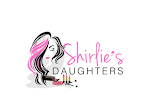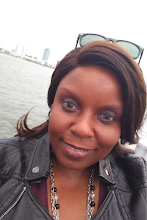What Is a Facial Cleansing Brush?
A facial cleansing brush is a handheld device designed to help you thoroughly cleanse your skin. Unlike traditional cleansing methods, which might leave behind dirt and oil, these brushes use either manual or motorized bristles to deeply clean your pores. They come in various shapes, sizes, and technologies, making it easier for you to find one that suits your skin type and needs.
Benefits of Using a Facial Cleansing Brush
Deep Cleansing: These brushes can remove makeup, dirt, and oil more effectively than just using your hands. This deep cleanse helps prevent breakouts and leaves your skin feeling refreshed.
Exfoliation: The bristles on these brushes also act as a gentle exfoliant, removing dead skin cells and promoting cell turnover. This can lead to smoother, more radiant skin over time.
Enhanced Product Absorption: By thoroughly cleansing and exfoliating your skin, these brushes allow your serums and moisturizers to penetrate deeper, making them more effective.
Improved Circulation: The massaging action of the brush boosts blood circulation in your face, giving you that healthy, post-facial glow.
Types of Facial Cleansing Brushes
Manual Brushes: These are the simplest type—no batteries, no fuss. You control the pressure and speed, making it a good option for sensitive skin. However, they require more effort to
achieve the same results as motorized versions.- Electric Brushes: These are battery-operated or rechargeable brushes that offer different speed settings and brush head options. They’re more powerful, making them great for deep cleansing, but they might be too intense for very sensitive skin.
Silicone Brushes: These brushes use soft silicone bristles instead of traditional fibers. They're more hygienic because they’re easier to clean and don’t harbor bacteria. Plus, they’re gentler on the skin, making them ideal for sensitive skin types.
Rotating Brushes vs. Vibrating Brushes: Rotating brushes spin around to cleanse the skin, while vibrating brushes use sonic pulses to loosen dirt and oil. Rotating brushes offer more exfoliation, but vibrating brushes are gentler and might be better for delicate skin.
How to Use a Facial Cleansing Brush
Choose the Right Cleanser: Use a gentle, non-abrasive cleanser with your brush. Avoid anything with harsh exfoliants, as the brush already provides exfoliation.
Wet Your Face and Brush: Always start with a damp face and brush. This helps the bristles glide smoothly over your skin.
Move in Circular Motions: Gently move the brush in circular motions across your face. Focus on areas that need extra attention, like your T-zone.
Don’t Overdo It: Use the brush no more than once a day, and if you have sensitive skin, you might want to limit it to a few times a week.
Clean Your Brush: After each use, clean the brush head with warm water and a gentle cleanser to prevent bacteria buildup.
Final Thoughts
Facial cleansing brushes are more than just a trend—they’re a valuable addition to any skincare routine. By deeply cleansing, exfoliating, and enhancing product absorption, they help you achieve healthier, more radiant skin. Whether you opt for a manual brush, an electric one, or a silicone model, there’s a perfect cleansing brush out there for you. So go ahead, give your skin the love it deserves and see the difference a good facial cleansing brush can make!
Affiliate links included

.png)




.png)
Comments
Post a Comment